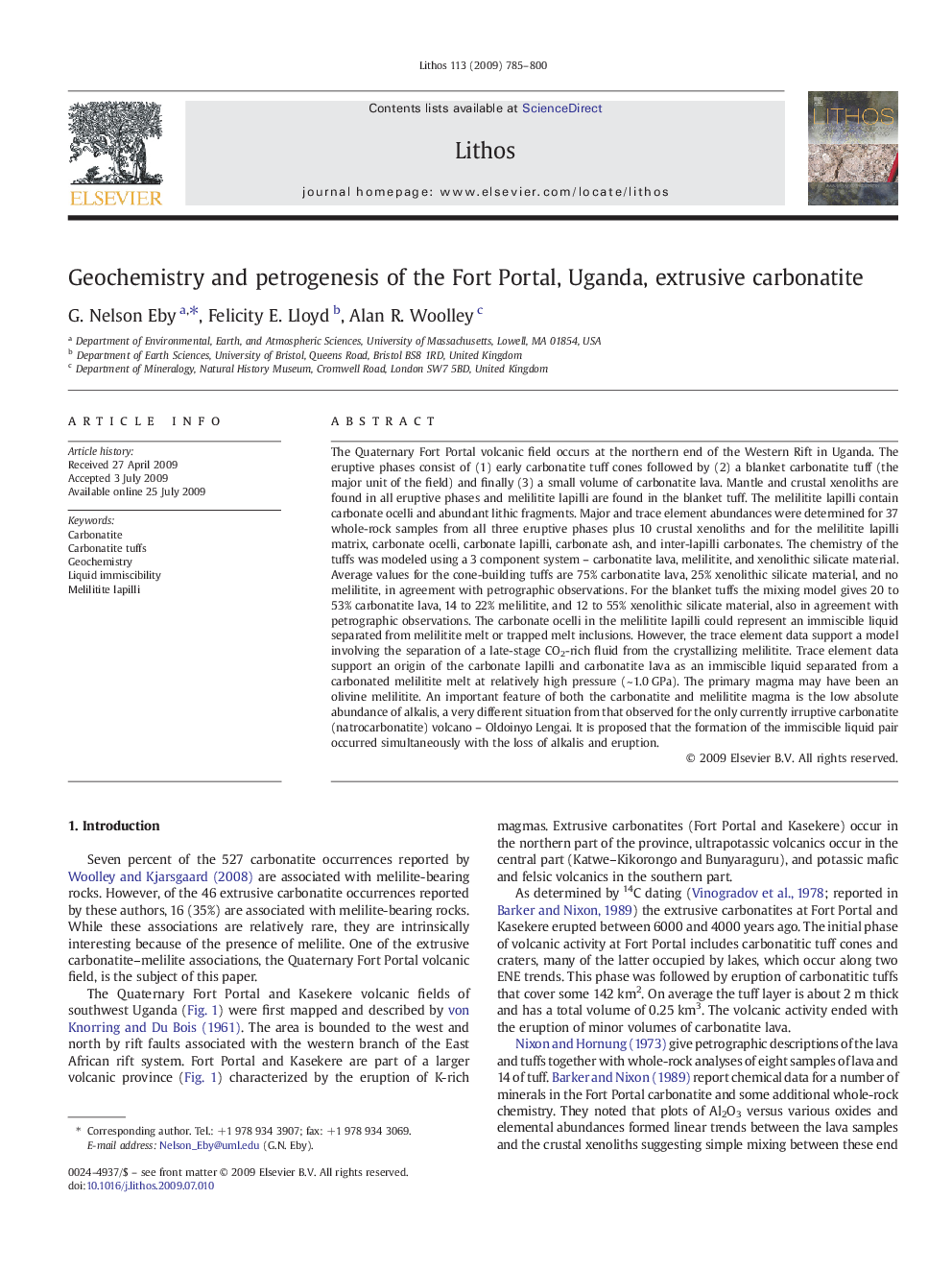| کد مقاله | کد نشریه | سال انتشار | مقاله انگلیسی | نسخه تمام متن |
|---|---|---|---|---|
| 4716964 | 1638738 | 2009 | 16 صفحه PDF | دانلود رایگان |

The Quaternary Fort Portal volcanic field occurs at the northern end of the Western Rift in Uganda. The eruptive phases consist of (1) early carbonatite tuff cones followed by (2) a blanket carbonatite tuff (the major unit of the field) and finally (3) a small volume of carbonatite lava. Mantle and crustal xenoliths are found in all eruptive phases and melilitite lapilli are found in the blanket tuff. The melilitite lapilli contain carbonate ocelli and abundant lithic fragments. Major and trace element abundances were determined for 37 whole-rock samples from all three eruptive phases plus 10 crustal xenoliths and for the melilitite lapilli matrix, carbonate ocelli, carbonate lapilli, carbonate ash, and inter-lapilli carbonates. The chemistry of the tuffs was modeled using a 3 component system – carbonatite lava, melilitite, and xenolithic silicate material. Average values for the cone-building tuffs are 75% carbonatite lava, 25% xenolithic silicate material, and no melilitite, in agreement with petrographic observations. For the blanket tuffs the mixing model gives 20 to 53% carbonatite lava, 14 to 22% melilitite, and 12 to 55% xenolithic silicate material, also in agreement with petrographic observations. The carbonate ocelli in the melilitite lapilli could represent an immiscible liquid separated from melilitite melt or trapped melt inclusions. However, the trace element data support a model involving the separation of a late-stage CO2-rich fluid from the crystallizing melilitite. Trace element data support an origin of the carbonate lapilli and carbonatite lava as an immiscible liquid separated from a carbonated melilitite melt at relatively high pressure (~ 1.0 GPa). The primary magma may have been an olivine melilitite. An important feature of both the carbonatite and melilitite magma is the low absolute abundance of alkalis, a very different situation from that observed for the only currently irruptive carbonatite (natrocarbonatite) volcano – Oldoinyo Lengai. It is proposed that the formation of the immiscible liquid pair occurred simultaneously with the loss of alkalis and eruption.
Journal: Lithos - Volume 113, Issues 3–4, December 2009, Pages 785–800